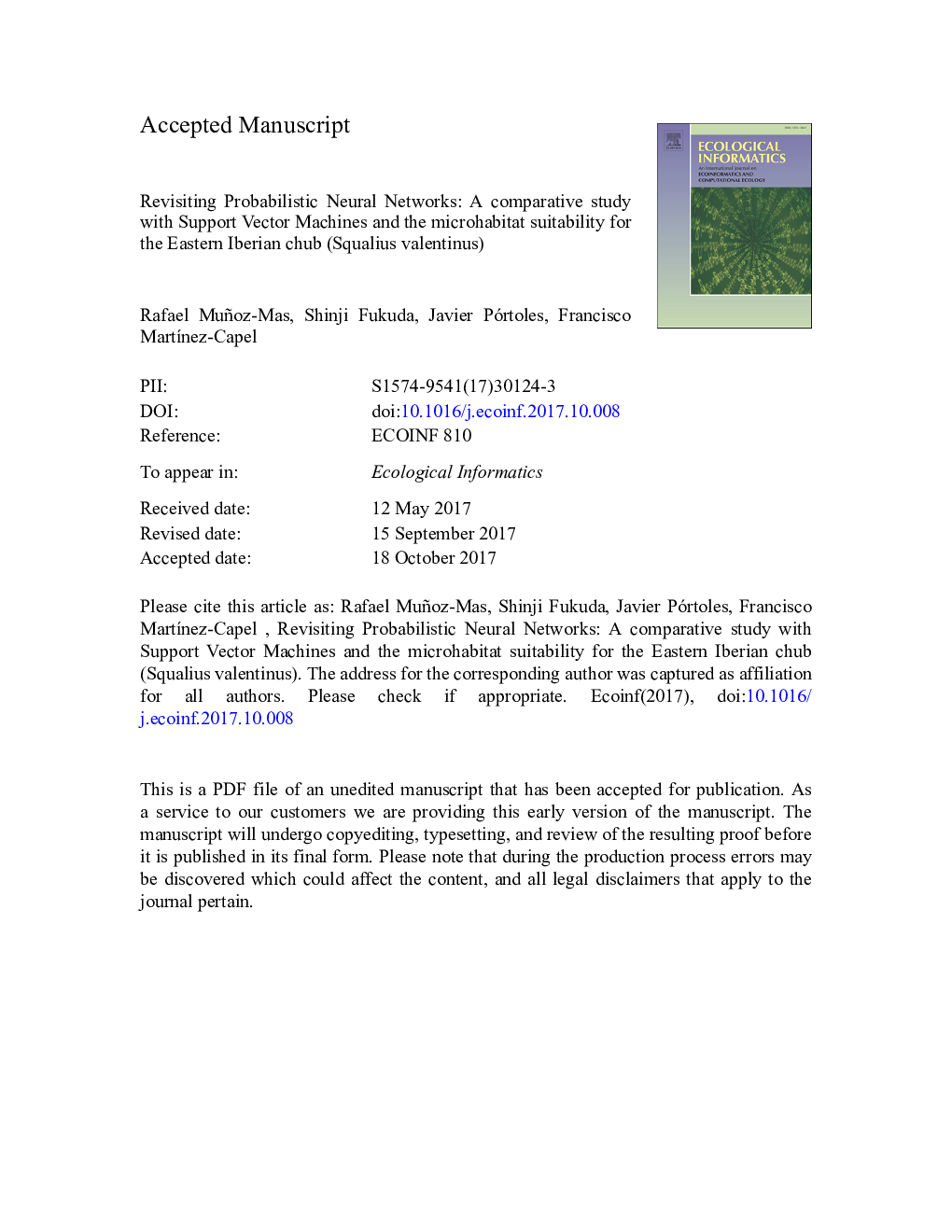| Article ID | Journal | Published Year | Pages | File Type |
|---|---|---|---|---|
| 8845855 | Ecological Informatics | 2018 | 64 Pages |
Abstract
Probabilistic Neural Networks (PNNs) and Support Vector Machines (SVMs) are flexible classification techniques suited to render trustworthy species distribution and habitat suitability models. Although several alternatives to improve PNNs' reliability and performance and/or to reduce computational costs exist, PNNs are currently not well recognised as SVMs because the SVMs were compared with standard PNNs. To rule out this idea, the microhabitat suitability for the Eastern Iberian chub (Squalius valentinus Doadrio & Carmona, 2006) was modelled with SVMs and four types of PNNs (homoscedastic, heteroscedastic, cluster and enhanced PNNs); all of them optimised with Differential Evolution. The fitness function and several performance criteria (correctly classified instances, true skill statistic, specificity and sensitivity) and partial dependence plots were used to assess respectively the performance and reliability of each habitat suitability model. Heteroscedastic and enhanced PNNs achieved the highest performance in every index but specificity. However, these two PNNs rendered ecologically unreliable partial dependence plots. Conversely, homoscedastic and cluster PNNs rendered ecologically reliable partial dependence plots. Thus, Eastern Iberian chub proved to be a eurytopic species, presenting the highest suitability in microhabitats with cover present, low flow velocity (approx. 0.3Â m/s), intermediate depth (approx. 0.6Â m) and fine gravel (64-256Â mm). PNNs outperformed SVMs; thus, based on the results of the cluster PNN, which also showed high values of the performance criteria, we would advocate a combination of approaches (e.g., cluster & heteroscedastic or cluster & enhanced PNNs) to balance the trade-off between accuracy and reliability of habitat suitability models.
Keywords
Related Topics
Life Sciences
Agricultural and Biological Sciences
Ecology, Evolution, Behavior and Systematics
Authors
Rafael Muñoz-Mas, Shinji Fukuda, Javier Pórtoles, Francisco MartÃnez-Capel,
